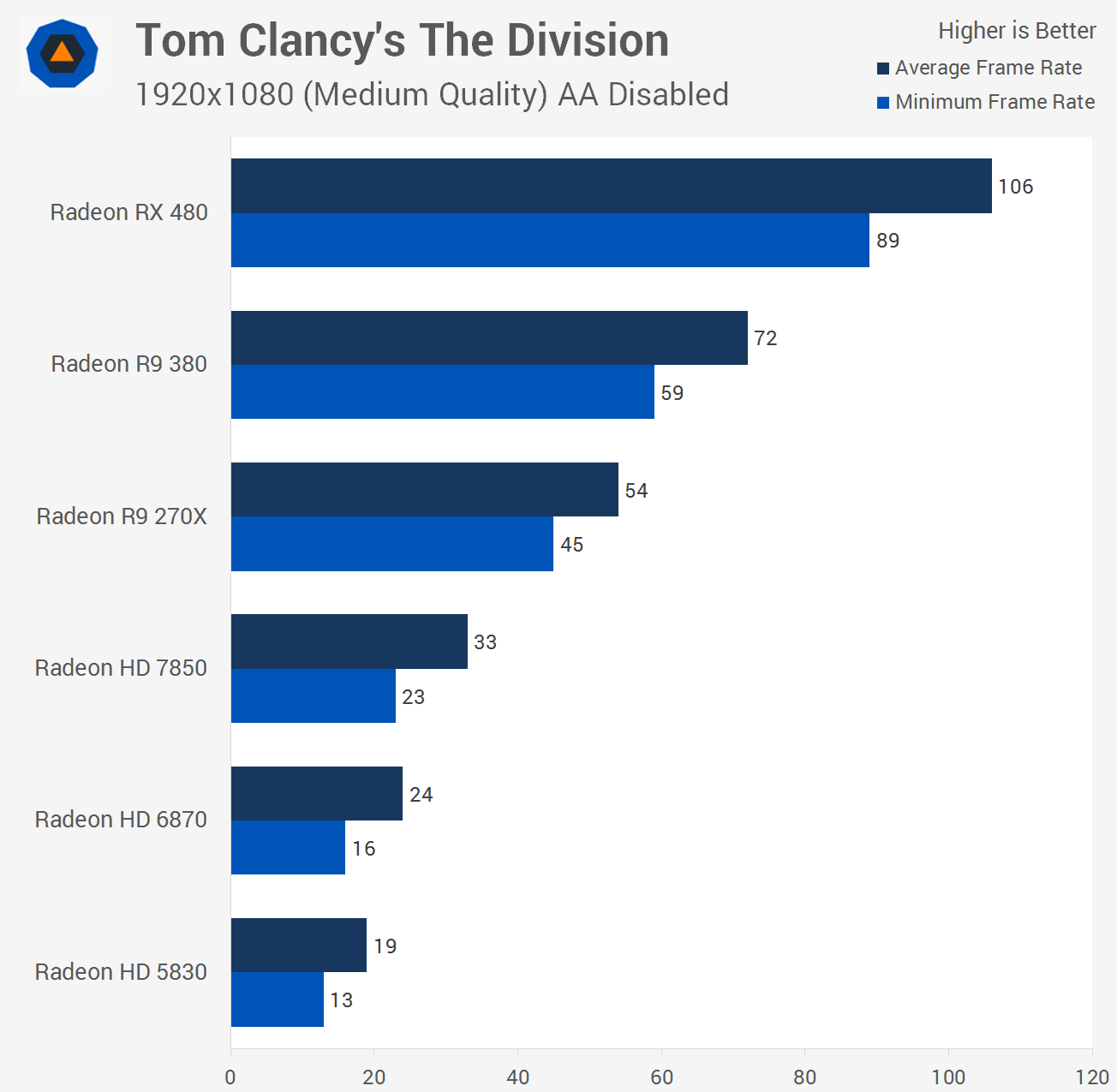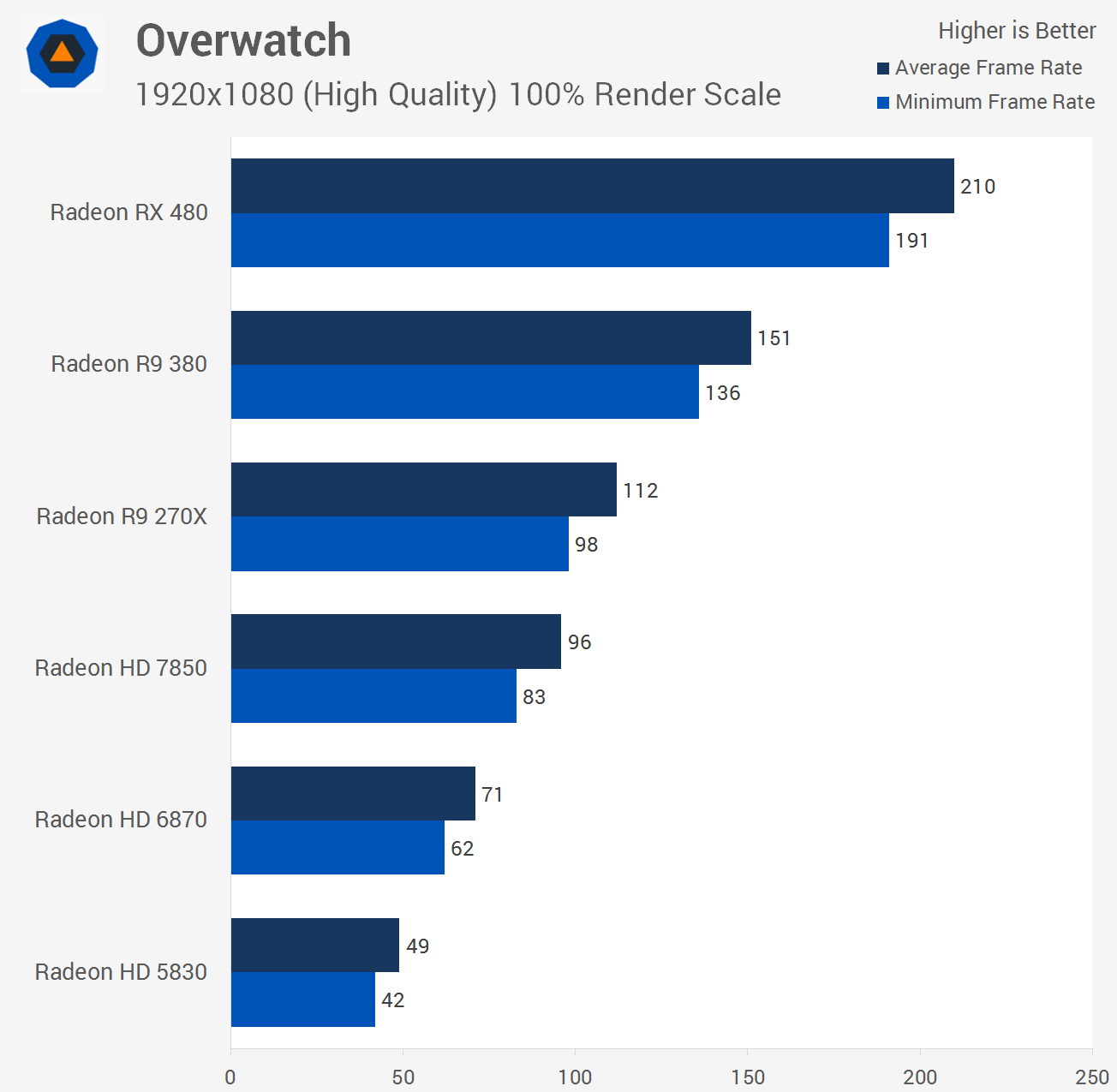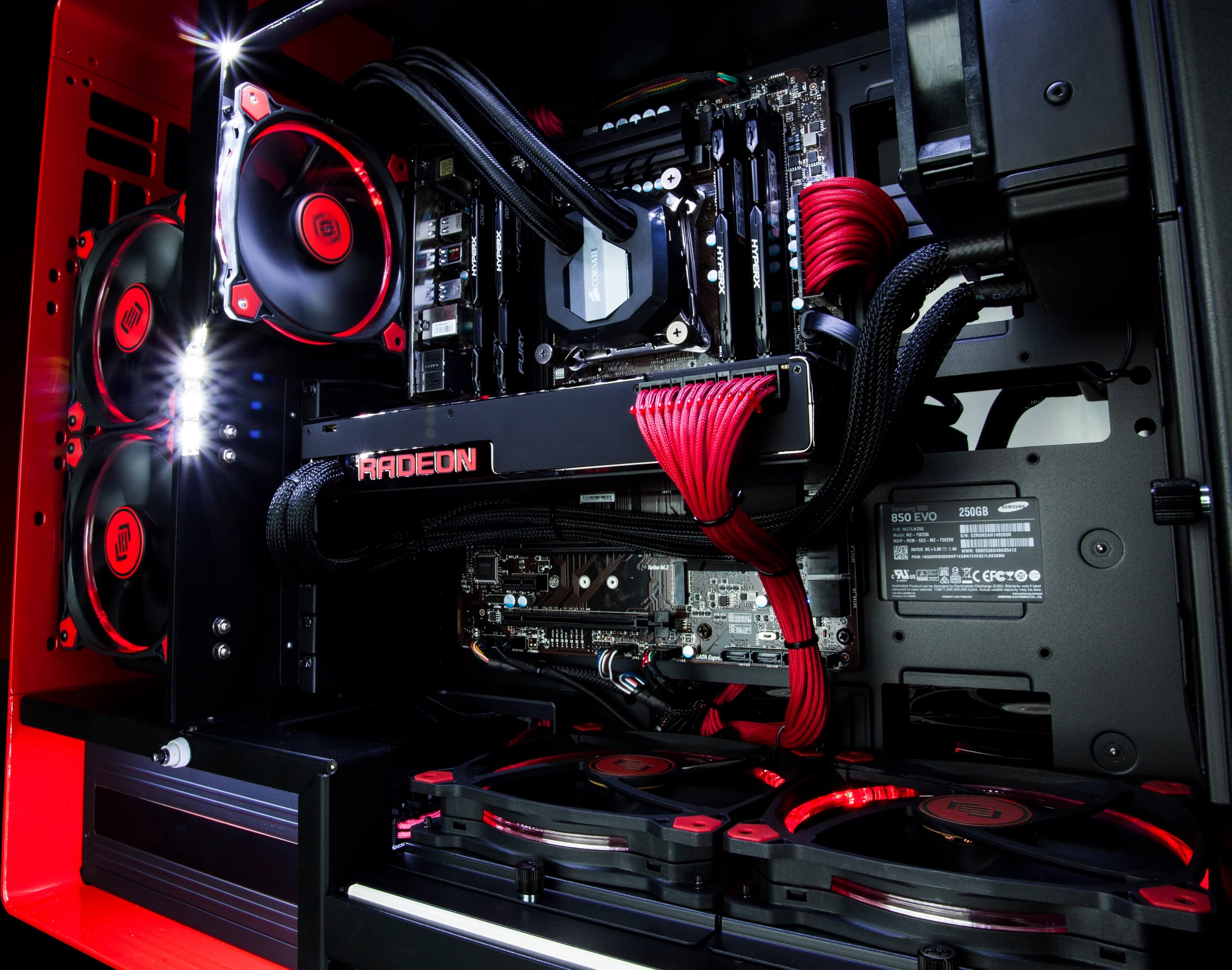A few weeks ago we published our latest feature in the 'Then and Now' series, testing and comparing six generations of flagship GeForce graphics cards. Since then many of you have asked for an AMD version, however the wait for next-gen Vega parts could be longer than anticipated.
So we decided to ditch high-end GPUs and considering we do have AMD's latest $200-250 offering on hand – the Radeon RX 480, that is – run the same exercise for past mainstream Radeon GPU releases.
The RX 480 may not be as drool inducing as a Pascal Titan X or even the GeForce GTX 1070, but it doesn't cost nearly as much either, which means this is what most people will end up buying. Whereas the GTX 1070 will set you back some $400+, the 4GB RX 480 should eventually sell for just $200. As history has shown us, once supply improves you can expect the RX480 4GB models to hit and possibly even dip below that official $200 MSRP.
This got us thinking, what has $200 bought you previously from the red team? We're talking release day MSRPs here, so discounts applied over the lifetime of the product weren't considered, such as the Radeon R9 280 which launched at $250 but eventually sold for as little as $200.
So keeping that in mind, last generation's $200 option was the Radeon R9 380, a card we crowned as the best mainstream option for 2015. Before that was the R9 270X which also landed at exactly $200.
In 2012, the HD 7000 series didn't feature a $200 option, instead you had the HD 7790 at $150 or the HD 7850 at $250. Therefore, we have selected the more expensive Radeon HD 7850 for this comparison.
A similar situation is found when looking at the HD 6000 series, which offered the HD 6850 for $180 or the 6870 for $240, so again we went with the more expensive option. The pricing strategy wasn't much different for the HD 5000 cards, though it was the HD 5830 that went for $240.
| Radeon | HD 5830 | HD 6870 | HD 7850 | R9 270X | R9 380 | RX 480 |
|---|---|---|---|---|---|---|
| Codename | Cypress LE | Barts XT | Pitcairn PRO | Curaçao XT (Pitcairn XT) |
Antigua Pro (Tonga Pro) |
Polaris 10 |
| Architecture | TeraScale 2 | TeraScale 2 | GCN 1st gen | GCN 1st gen | GCN 3rd gen | GCN 4rd gen |
| Fab | 40nm | 40nm | 28nm | 28nm | 28nm | 14nm |
| Transistors (Billion) | 2.1 | 1.7 | 2.8 | 2.8 | 5.0 | 5.7 |
| Die size (mm2) | 334 | 255 | 212 | 212 | 359 | 232 |
| Cores | 1120 | 1120 | 1024 | 1280 | 1792 | 2304 |
| TAU | 56 | 56 | 64 | 80 | 112 | 144 |
| ROP | 16 | 16 | 32 | 32 | 32 | 32 |
| Memory | 1024MB | 1024/2048MB | 1024/2048MB | 2048/4096MB | 2048/4096MB | 4096/8192MB |
| Bus width | 256-bit | 256-bit | 256-bit | 256-bit | 256-bit | 256-bit |
| Bandwidth | 128 GB/s | 134 GB/s | 153.6 GB/s | 179 GB/s | 182 GB/s | 224/256 GB/s |
| Release date | Feb 25, 2010 | Oct 22, 2010 | Mar 19, 2012 | Aug 8, 2013 | Jun 18, 2015 | Jun 29, 2016 |
| Price at release | $239 | $239 | $250 | $200 | $200 | $200 |
Before we jump to the benchmarks, the table above will give you a good overall perspective of GPU specs, launch price, and the release date itself. The HD 5000 series was first to deliver DirectX 11 support, which is why we didn't go back further than this generation. This series and its successor were built using the aging TeraScale microarchitecture.
TeraScale was a VLIW SIMD architecture, while Nvidia use a RISC SIMD architecture, similar to TeraScale's successor Graphics Core Next (GCN). Both 2012 and 2013's mid-range HD 7850 and R9 270X featured first-generation GCN, then mid-2015 brought the third-gen GCN R9 380 and then this year we received the fourth-gen GCN RX 480.
With the exception of the HD 7850, we have seen a steady increase in core count from AMD's mid-range GPUs over the years. Memory bandwidth has also increased steadily and the biggest jump can be seen most recently from the R9 380 to the RX 480.
Test System Specs
|
Benchmarks: Tom Clancy's The Division, Overwatch

First up, let's take a look at the performance of these mid-range GPUs using Tom Clancy's The Division with the medium quality preset in play. The Radeon HD 5830 was good for just 19fps while the 6970 was 26% faster, which was still only 24fps. From the 6870 to the 7850 we see a rather large 38% boost in performance to 33fps.
Beyond that we start to see very playable performance as the R9 270X achieved 54fps. That is a massive 64% boost over the 7850 and frankly we didn't expect that. We believe the massive difference is down to the fact that the 7850 only has a 1GB memory buffer while the 270X has twice that.
The R9 380 was 33% faster than the 270X which is another nice gain and this pushed the average frame rate to 72fps. Despite that one of the biggest gains we see is the move from the 380 to the RX 480 as AMD's latest mid-range offering was an impressive 47% faster.

You have to hand it to Blizzard for making highly enjoyable games that run on just about anything. Overwatch might not have the visuals of Rise of the Tomb Raider or Battlefield 1, but it still looks remarkable in my opinion and it only makes it all the more impressive to see the HD 5830 hitting an average of 49fps at 1080p.
Even with the 5830 able to deliver playable results, the 6870 went on to deliver a 45% boost for an average of 71fps. The 7850 was 35% faster still with an average of 96fps and didn't appear to be hindered by its 1GB frame buffer in this title. With the 7850 performing as it should, the R9 270X was just 17% faster this time.
The R9 380 provided a further 35% performance jump, reaching an average of 151fps. Nevertheless, the RX 480 was good for almost 40% more performance again at 210fps – impressive stuff from AMD's latest mid-range offering.

